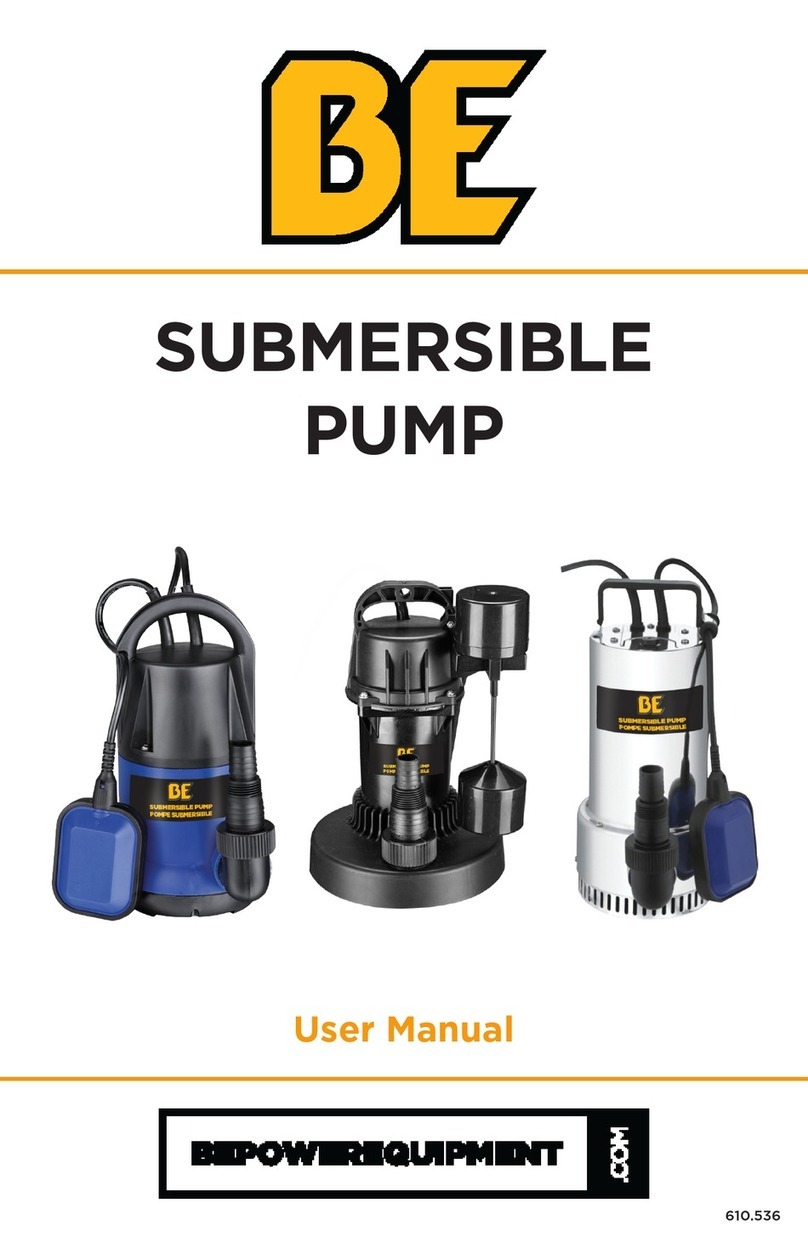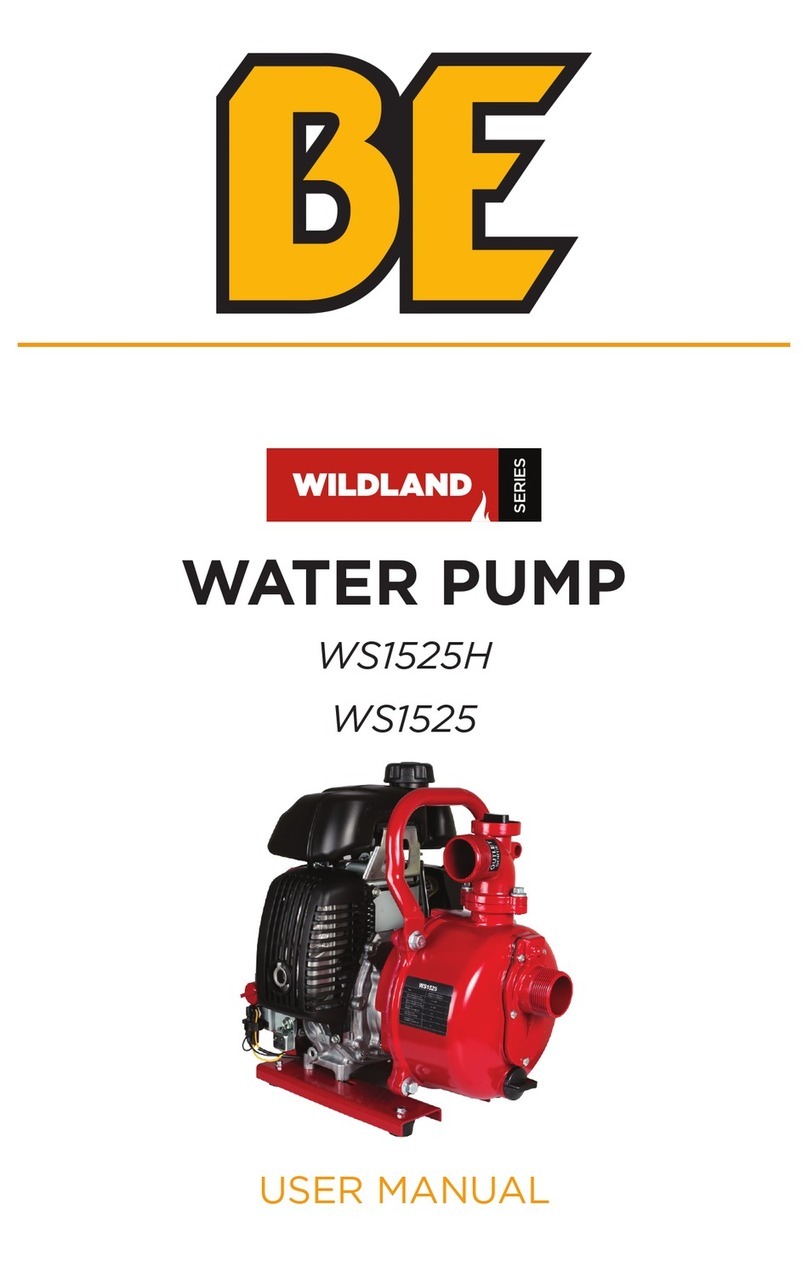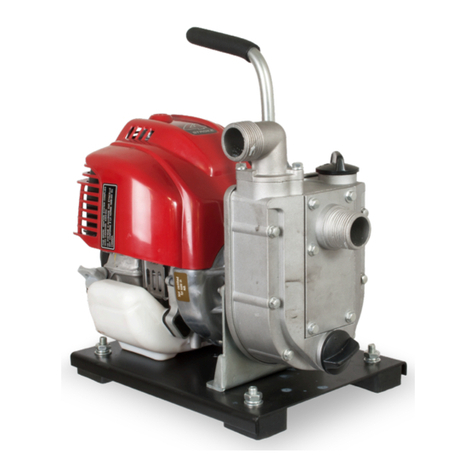
9
CAUTION
Excessively high operating speeds increase risk of injury and damage to
water pump.
Excessively low speeds impose a heavy load.
• DO NOT tamper with the governed speed.
• DO NOT modify the water pump.
• DO NOT allow unqualified persons or children to operate or service
water pump.
NOTICE
Improper treatment of water pump can damage it and shorten its life.
• If you have questions about intended use, ask dealer or contact
nearest authorized dealer.
• Be sure pump chamber is filled with water before starting the engine.
Never run pump without priming.
• Use a non-collapseable hose on the suction side of the hose.
• Use water pump only for intended uses.
• Pumping sea water, beverages, acids, chemical solutions, or any other
liquid that promotes corrosion can damage the pump.
• Ensure all connections are air tight.
• DO NOT obstruct the suction or discharge hose in any way.
• NEVER operate pump without strainer basket connected to end of
suction hose.
• NEVER allow vehicles to drive over hoses. If a hose must be
positioned across a roadway, use planking on each side of hose to
allow vehicles to pass over without obstructing or collapsing hose.
• Anchor pump to avoid equipment movement.
• Keep equipment away from edge of river or lake where it could cause
the bank to collapse.
• DO NOT insert any objects through cooling slots.
• NEVER operate units with broken or missing parts, or without
protective housing or covers.
• DO NOT by-pass any safety device on this machine.
• NEVER move machine by pulling on hoses. Use frame on unit.
• Check fuel system for leaks or signs of deterioration, such as chafed
or spongy hose, loose or missing clamps, or damaged tank or cap.
Correct all defects before operating water pump.
SAFETY
































